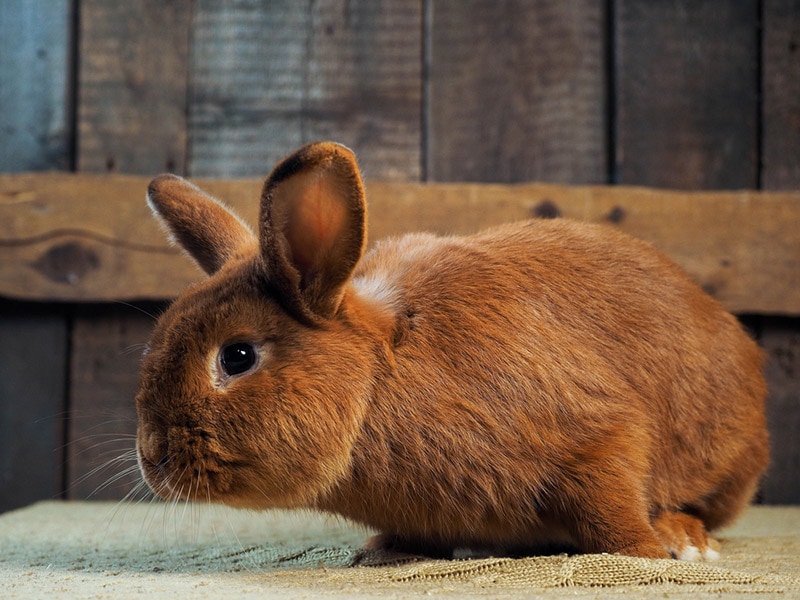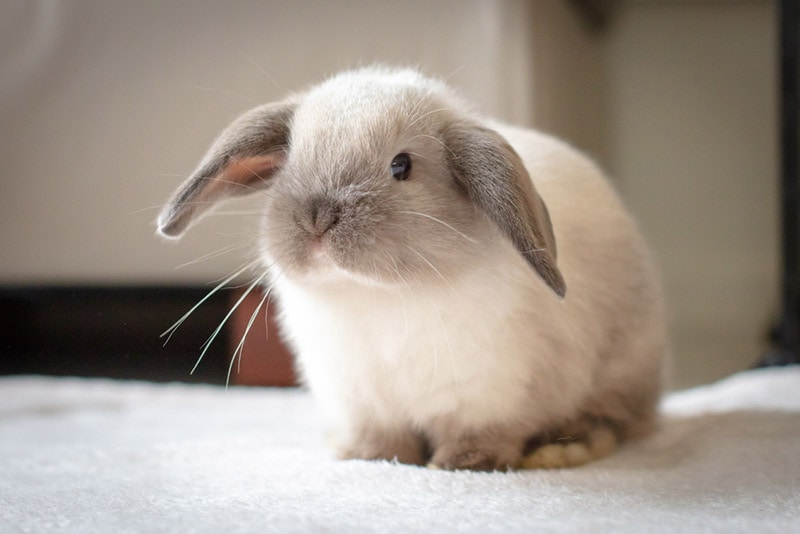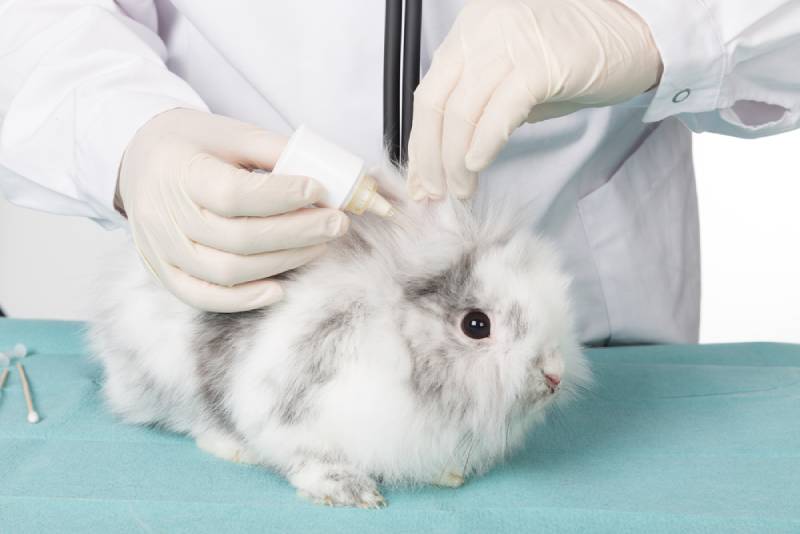Dwarf Angora Rabbit: Pictures, Care Guide, Lifespan & Traits
Updated on
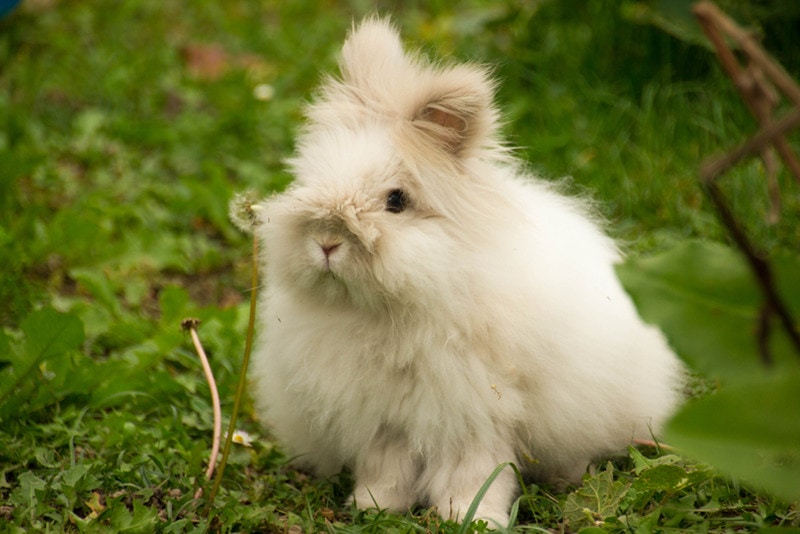
Click to Skip Ahead
If you look in the dictionary under the word “adorable,” you’re likely to see a picture of the Dwarf Angora Rabbit. Dwarf Angora Rabbits are tiny, fluffy, and have a wonderful disposition. For these reasons and several more, this rabbit is bred almost exclusively as a pet today. Read on to learn everything about these enchanting animals and what it takes to raise a Dwarf Angora Rabbit as a near-perfect companion animal.
| Size: | Miniature |
| Weight: | Up to 4 pounds |
| Lifespan: | 6–10 years |
| Similar Breeds: | Lionhead, Mini Lop, Mini English Angora, Jersey Wooly, Dwarf Hotot, Holland Lop |
| Suitable for: | Families with children, singles, seniors |
| Temperament: | Calm, quiet, easy to handle, affectionate, gets along well with other small animals |
As a cross between the Angora rabbit and the Netherland Dwarf rabbit or Polish rabbit, the Dwarf Angora Rabbit would easily win a contest for the cutest, sweetest, and easiest-to-handle rabbit breed. These rabbits excel as pets, enjoy being handled and petted, and are as easy to care for as your typical cat. The Dwarf Angora Rabbit is unrecognized as a pure rabbit breed. Most Dwarf Angora Rabbit owners, however, don’t care about their lack of recognition. The ARBA recognized them in 1988 but only as a dwarf version of the Angora.1
Dwarf Angora Rabbit Characteristics
How Much Do These Rabbits Cost?
Although they aren’t the most prolific breed in the United States, the cost to purchase and adopt a Dwarf Angora Rabbit will typically be less than $80. If you wish to adopt a Dwarf Angora with a fine lineage, you should be prepared to pay upwards of $300.
Temperament & Intelligence of the Dwarf Angora Rabbit
As mentioned earlier, Dwarf Angora Rabbits have a very laid-back temperament and are generally calm, quiet, and easy to handle. Regarding intelligence, anecdotal evidence shows that training a Dwarf Angora to use a litter box is relatively easy. One thing that must be noted is that, as most animals kept as pets, you must begin socializing your Dwarf Angora Rabbit as early as possible. These rabbits have a low propensity for biting and clawing, but when well-socialized, the negative traits are practically erased.
Do These Rabbits Make Good Pets? 👪
Dwarf Angora Rabbits are well-known as excellent pets and are bred almost exclusively for the pet market. Dwarf Angoras are easy to handle and love being petted and caressed by their owners. Most can be taught basic commands, and, as mentioned earlier, the Dwarf Angora is easy to potty train. They’re the ideal pets and are affectionate, docile, friendly, and endearing.
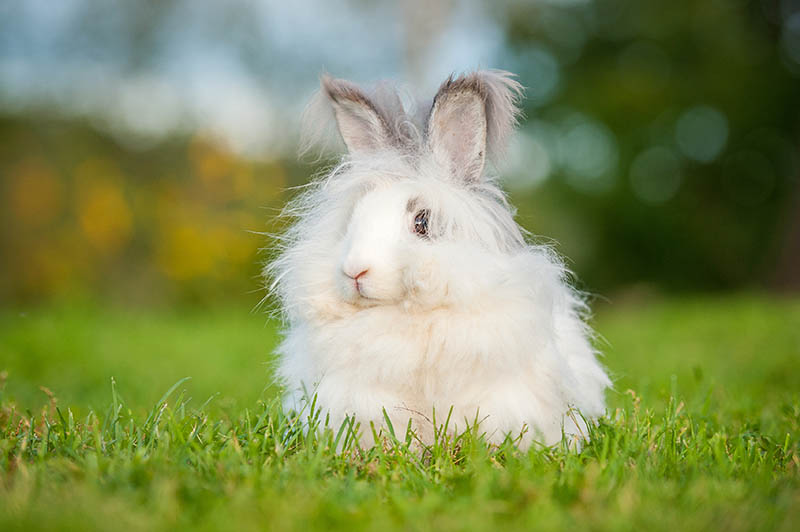
Does This Rabbit Get Along With Other Pets?
Socializing your Dwarf Angora early with other pets will lower their anxiety and stress levels when being handled. Most Dwarf Angoras get along well with guinea pigs and other rabbits. However, it should be noted that having a rabbit in the same household as a large dog might be problematic, especially if the dog has a high prey drive. Still, if you socialize your Dwarf Angora Rabbit and raise it with a puppy, both animals should get along swimmingly.
Things to Know When Owning a Dwarf Angora Rabbit
Food & Diet Requirements 🥕
Like all rabbit breeds, the Dwarf Angora requires a constant supply of fresh hay daily to stay healthy and happy. Timothy hay is one of the best and is needed to keep your rabbit’s teeth from overgrowing and ensure their digestive system stays healthy. Like all rabbits, the Dwarf Angora’s GI tract needs a constant influx of food material to digest. A high-quality commercial rabbit pellet is also required but is less important than a continuous supply of fresh hay. As with any pet, fresh, clean water it can access easily is also vital.
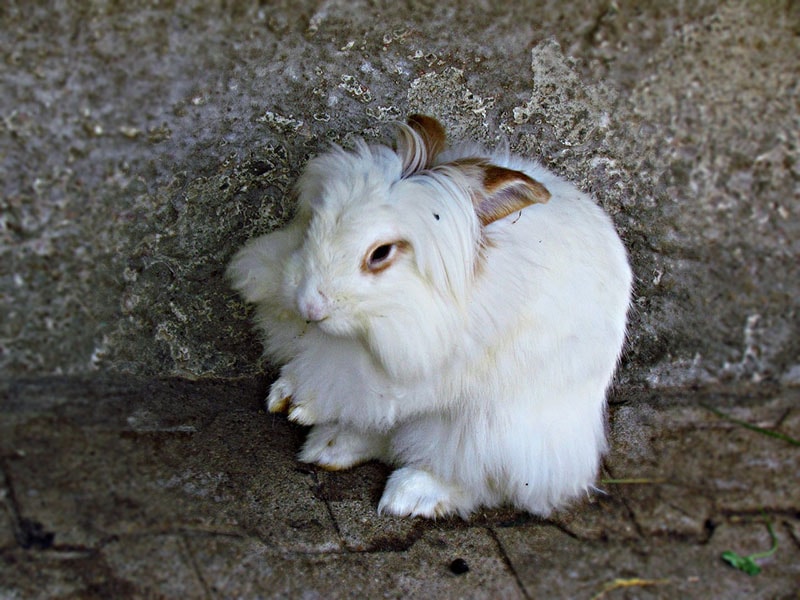
Habitat & Hutch Requirements 🏠
Since most Dwarf Angora Rabbits are raised as pets, and because they’re tiny, fragile animals, it’s highly recommended that you keep them indoors. It’s also recommended that you provide a large enough hutch so your pet can move around freely and have its bed and litter box in the same enclosure.
Because of their small size, it’s best to get a hutch that’s 3 feet long by 3 feet wide and 2 feet high. However, if you’re keeping more than one in the same hutch, you should increase its size by about 50%. As with all rabbits, clean bedding is a must. You can also purchase a glass water bottle since some Dwarf Angoras are known to chew plastic water bottles to pieces.
Exercise & Sleeping Needs 🐇
A large hutch is important, but you also have to provide your Dwarf Angora with 2 to 3 hours of exercise daily to run around and explore. Like most rabbits, the Dwarf Angora is more active in the early morning and late afternoon. They sleep through the night, making it essential to provide them with a dark, quiet, and draft-free area in your home.
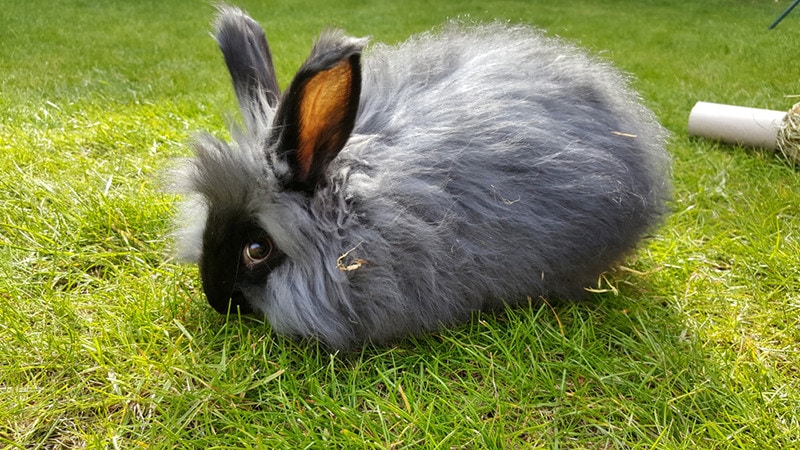
Training 🥎
While anecdotal evidence points to Dwarf Angora Rabbits being easy to potty train, all rabbits are unique, and some will be easier than others. As for training your Dwarf Angora with treats, it isn’t as reliable since the rabbits have a low drive for food (besides the usual hay and pellets).
Grooming ✂️
Because they’re so small and have relatively short coats, grooming a Dwarf Angora Rabbit is straightforward. Brushing them two or three times a week is recommended, as well as having your rabbit’s nails trimmed when necessary. Learning how to do this yourself is a great way to save money, but some owners prefer to take their Dwarf Angoras to a professional groomer since they can become stressed during the grooming process.
It’s also worth noting that you should never bathe your Dwarf Angora. They don’t need it as they’re fastidious creatures and clean themselves constantly. Trying to bathe a bunny will stress them out significantly and can lead to scratching and other problematic behavior.

Lifespan & Health Conditions 🏥
Most Dwarf Angora rabbits are relatively healthy, especially when kept indoors and fed a high-quality diet. One thing that is essential to know about rabbits, however, is that they need a constant supply of hay to keep their digestive system healthy, their teeth from overgrowing, and prevent dental issues. It’s also critical to note that most health issues your pet will experience relate directly back to an inadequate, low-quality diet. Lastly, you must have your rabbit vaccinated against the most common diseases that affect them.
- Ear mites
- Snuffles (pastuerella multocida)
- Myxomatosis
- Calicivirus
- Coccidiosis
- Enteritis
Male vs Female
Besides the obvious difference between male and female Dwarf Angora Rabbits, they have the same temperament. Veterinarians recommend fixing male and female rabbits since spaying or neutering increases an animal’s lifespan by 10 to 20%. Also, spaying and neutering tend to reduce aggressive tendencies.
3 Little-Known Facts About The Dwarf Angora Rabbit
1. It’s Illegal to Keep a Dwarf Angora Rabbit In Queensland, Australia, Unless You’re a Magician
Queensland has well-known wild rabbit overbreeding problems.
2. Dwarf Angoras Were Further Developed in New Jersey in the 1970s and Were Known as Jersey Wooly Rabbits
Although they originated from Australia, Dwarf Angoras were modified by breeders in New Jersey.
3. The Dwarf Angora Is Sometimes Referred to as the “No Kick Bunny” Because It’s so Calm
That’s one of the reasons this bunny is a fan favorite.
Final Thoughts
Although they aren’t fully recognized as a breed, the Dwarf Angora Rabbit is one of the most affectionate, easygoing, and likable rabbits to keep as a pet. They’re easy to care for, never grow bigger than 3 to 4 pounds at most, and are exceptionally cute and fluffy.
If you’re looking for an intelligent, cuddly rabbit to keep as a pet that likes being handled, the Dwarf Angora Rabbit is a fantastic choice.
See Also:
Featured Image Credit to: Sabine Everaert, Shutterstock


